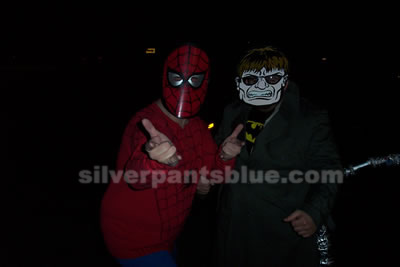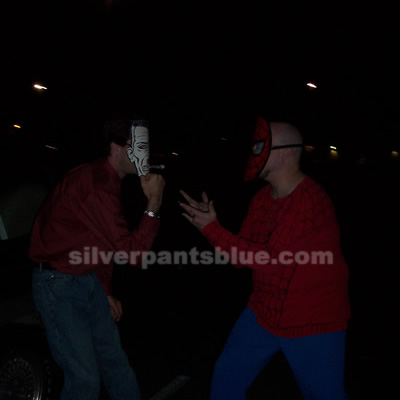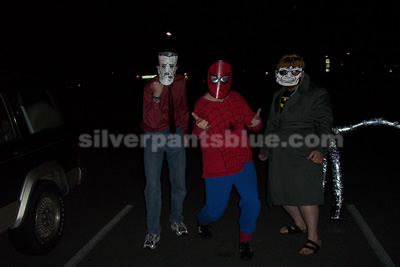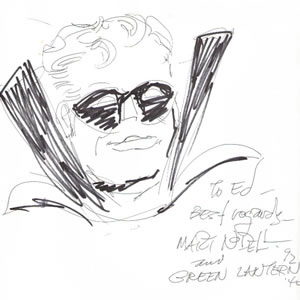A little while ago I was looking at my expenses and marveling at how much money goes towards my comic book habit (although, really, it's not nearly as much as the ultra hardcore folks in the hobby). Even though I don't really get any more stuff than I ever remember getting, and almost certainly buy a lot less that I did in the peak times of my obsession, before I'd given up on Marvel entirely, it still seems to be a tighter squeeze and a spendier hobby than it ever was. I know the prices have been going up pretty quick lately, but "ever" is a long time. Was it harder for little Timmy to buy this month's Action Comics, or did it cost more for Timmy's granddad in 1940?
I thought it would be an interesting exercise to look at the real price of comics historically by mapping out two lines- one the general cover price most standard sized Marvel and DC books were for a given year, the other the real value of that amount of money in today's dollars. To obtain the second set of data points, I used the value calculators at measuringworth.com to obtain historical values set against a control year of 2006 (the most recent year available). Once completed, the graph told a very interesting story about how much we have been spending on the notion of wearing underwear outside our clothes. I chose 1937 to 2007 because A) it's a nice clean run of 70 years, and B) Detective Comics #1 is probably the best starting point for the experiment anyway.
So... Is comic collecting
really more spendy now than in the history of EVER?
In a word, yes.
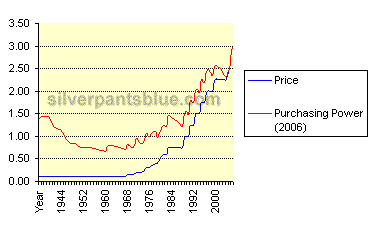
The chart (a larger version can be found
here) shows us that comics have always been cheaper than they are now, though the prices have fluctuated rather widely. The initial drop in prices is pretty obvious: prior to World War Two providing economic stimulation that shook the world out of the Great Depression, ten cents was a hell of a lot of money. In 1939, as the world was being pulled into the conflict, a ten-cent comic book was equal to about $1.45 in 2006 dollars. By the end of the war, that was $1.03 and steadily dropping. While the rate of decrease continued uninterrupted until the 12-cent increase in 1962 brought the adjusted price of comics from 67 to 80 cents, there was never as rapid a decline in the expense (not the price) of comics as we'd see coming out of the depression. This may account for some of the scarcity of early Golden Age books; many sources cite wartime paper drives, the passage of time, and simply throwing the books out, but at a time when ten cents would buy you a meal, a comic book just wasn't that cheap.
So if we throw out the Great Depression and WWII as anomalies, we're left with a fairly gradual climb in which comics never really got expensive until the 60 and 75 cent days of the early-mid 1980s. This was at a time when comics were still quite plentiful outside of specialty stores; the industry depended on spinner racks in pharmacies, grocery stores, and bookshops to attract casual readers like little Timmy. The data suggests publishers were aware of this, because after the jump to 75 cents in 1983-84, comics held steady for quite some time and actually became more affordable.
Enter Tim Burton.
In 1989, the first Batman film caused a comics glut that resulted in a few years of rampant speculation, overprinting, and price increases (beginning with the 33% increase in price to one dollar in that same year). Many people have argued that this dealt the industry as it had been for several years prior a killing blow, and the data supports this. At no time prior to the early 90's glut was there ever so steep a climb in both the nominal and real cost of comics. I would hazard a guess that this initial increase of a dollar was done to cover costs, since books had held out at 75 cents for a while, but it was timed to happen when the publishers would be least likely to suffer for it (as demand would be up even at a higher price because of the Batman movie and the overall interest in comics).
So now it's 1989, comics cost a WHOLE DOLLAR in the currency of the time, and things are about to get even costlier. Next time I'll cover what I
think happened between then and now, because unlike the pre-batboom years, we really can't prove squat.
